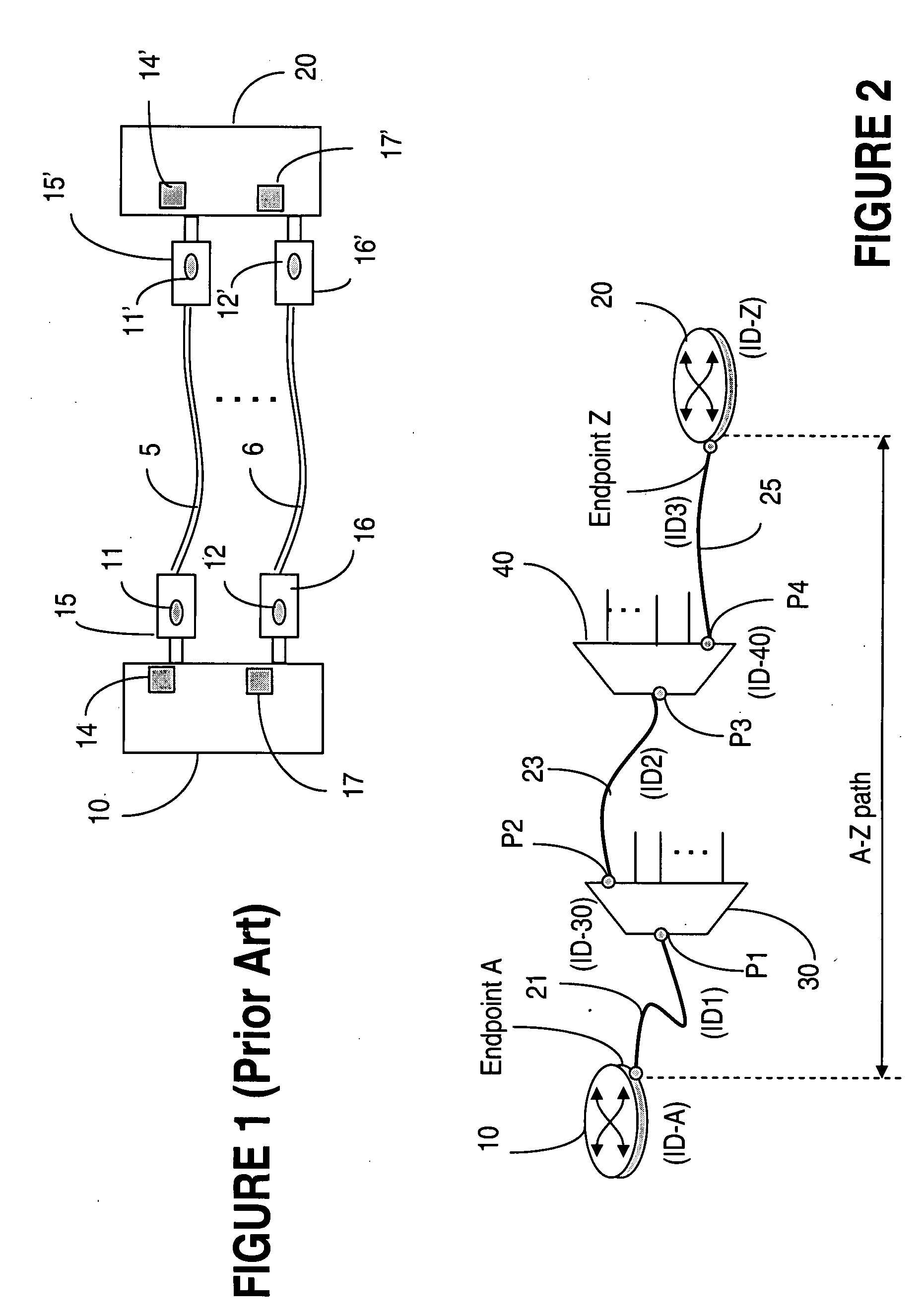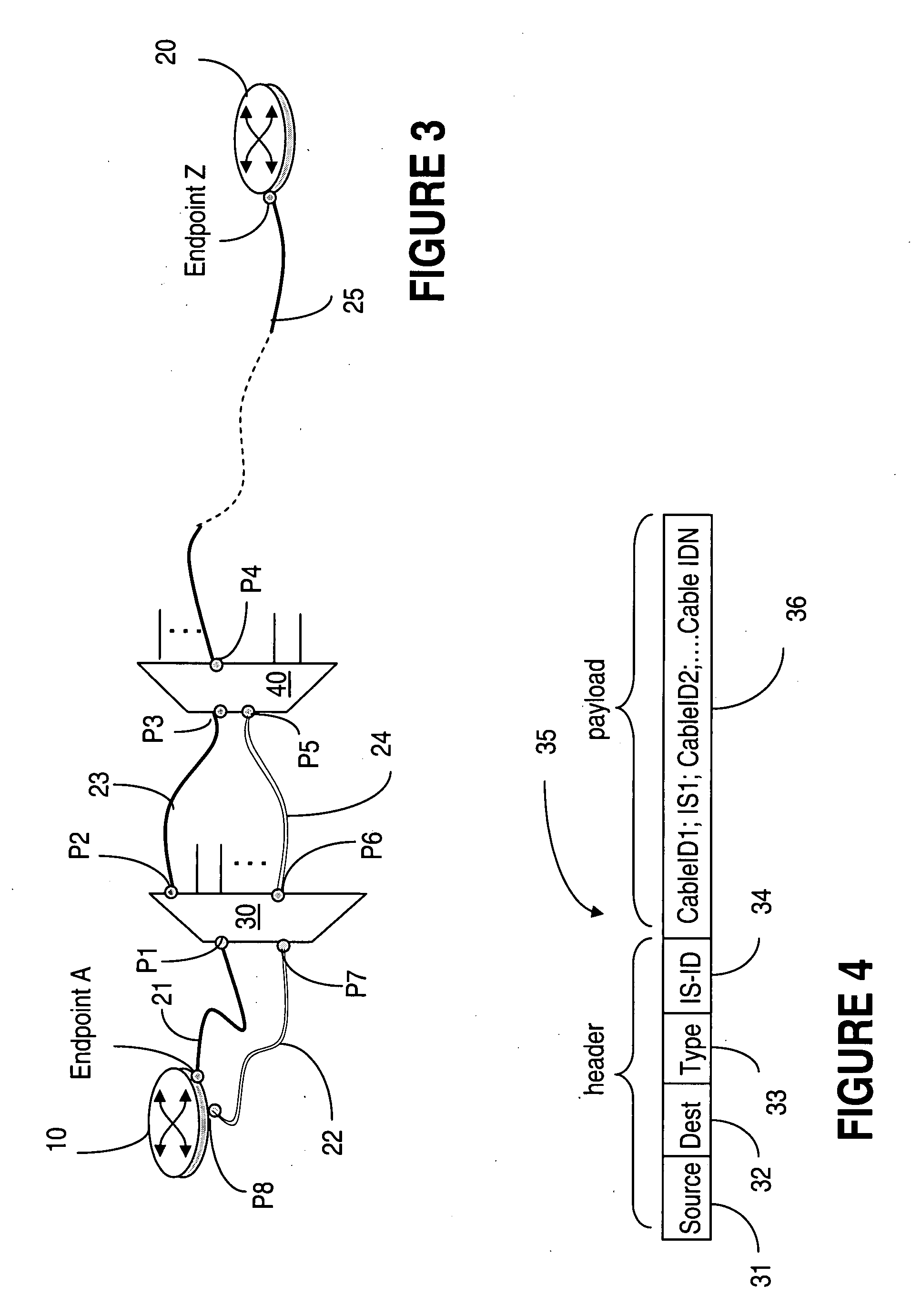System and method for tracing cable interconnections between multiple systems
a technology of multiple systems and cable interconnections, applied in the field of communication networks, can solve the problems of high cost of space in these environments, complex network deployment and upgrade challenges for providers, and real possibility of incorrect connections, and achieve the effect of reducing the time taken
- Summary
- Abstract
- Description
- Claims
- Application Information
AI Technical Summary
Benefits of technology
Problems solved by technology
Method used
Image
Examples
Embodiment Construction
[0026]FIG. 1 (Prior art) illustrates one of the current solutions used for tracing cabling interconnections using radio frequency identification tags. In this example, cables 5 and 6 operatively connect two units of equipment 10 and 20. A RFID pairs of tags 11, 11′ and 12, 12′ are affixed proximate to each end of the cables 5 and respectively 6. Preferably, the tags are embedded in the respective connector 15, 15′ and 16, 16′ mounted at the end of the respective cables 5 and 6. The tags store cable identity data that distinguishes the cables from each other, distinguishes the ends of the cables, and identify the equipment and ports the cables should connect to. The identity data may include additional data to specify further information about the cable or the connector, etc. For example, in the case of an optical fiber cable, the additional data may indicate the fiber type so that the properties for a laser that will be used to produce signals transmitted on the fiber may be selecte...
PUM
 Login to View More
Login to View More Abstract
Description
Claims
Application Information
 Login to View More
Login to View More - R&D
- Intellectual Property
- Life Sciences
- Materials
- Tech Scout
- Unparalleled Data Quality
- Higher Quality Content
- 60% Fewer Hallucinations
Browse by: Latest US Patents, China's latest patents, Technical Efficacy Thesaurus, Application Domain, Technology Topic, Popular Technical Reports.
© 2025 PatSnap. All rights reserved.Legal|Privacy policy|Modern Slavery Act Transparency Statement|Sitemap|About US| Contact US: help@patsnap.com



